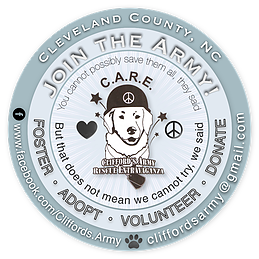Lets truly discuss the meaning of “no-kill”.
No kill is not some magical percentage to achieve. It is to end the killing of all animals who are not irremediably physically suffering, rigorously defined.
(Irremediable Suffering: An animal who has a poor or grave prognosis for being able to live without severe, unremitting physical pain even with prompt, necessary, and comprehensive veterinary care.)
A “ no kill ” shelter is an animal shelter that does not kill healthy or treatable animals even when the shelter is full, reserving euthanasia for terminally ill animals or those considered dangerous to public safety.
The differences between no kill and kill shelters are that no kill will save animals that are not only healthy but those that are:
- Community dogs and cats regardless of whether they are social or unsocial with humans
- Animals suffering from or exposed to a treatable, contagious illness
- Poorly socialized dogs
- Shy dogs
- Traumatized dogs
- Animals surrendered for euthanasia (must be independently evaluated by a vet)
- Treatable animals labeled behavior or medical impediments even if signed over for euthanasia
- Animals based on arbitrary criteria such as color age or breed
How does a shelter achieve ” no kill”?
- Rescue partnerships
- Volunteers
- Foster care
- Community cat/dog sterilization
- Comprehensive adoption program
- Public relations – Community involvement
- High volume/ low cost sterilization
- Proactive redemption
- Pet retention
- Medical & behavior prevention and rehabilitation
- Hard-working, compassionate shelter director
This can be done. Austin Animal Services, an open admission animal shelter , took in 18,000 animals last year and had a live release rate of 96.4%. (Austin Texas has a population of 950,715 compared to 97,334 in Cleveland County). They are the largest no kill community in America and have achieved this since 2011.
Their mission statement which I have copied below includes the animal’s welfare.
Mission Statement
To provide public service and a safety net for lost and homeless animals in the community by providing necessary food, water, shelter and standard municipal veterinary care for animals in need.To provide placement services that will assist lost, homeless or sheltered animals to their homes or find new homes when necessary, to provide live outcomes for at least 90% of sheltered animals.
To enforce animal regulations and assist the public with animal-related concerns, including impoundment, quarantine and other rabies control services in order to protect citizens and animals in our community.
To provide animal services to the public in order to educate and prevent animal homelessness and promote humane, compassionate treatment of animals and responsible pet ownership.
One of the laws that help protect the dogs’ welfare in Austin is their anti tethering ordinance. They not only enforce this law but work with the public to help them comply.
Video link below
If a city the size of Austin with a population larger than the whole state of Florida can do it, then others should be able to do likewise.
Shelters must be proactive, not reactive. Rescues need to be contacted when the animals come into the shelter.
Almost every rescue director that I know, if they have no time for anything else, they check their emails. The thing is when we check our emails, many of us know what the others look for.
For instance, we may know that one rescue pulls more shepherd mixes, or lab mixes, or small dogs or puppies. Many of us network with each other, but many of us do not get time to scroll through pages and pages of social media. (and contrary to what some people may think, I do not even manage our FB page)
You cannot expect rescues to be focused on one shelter. We are not a very large rescue and we get emails from tons of shelters, so I cannot even imagine what a large rescue gets.
Pet retention. Think outside the box. Have them call first. Ask why they need to surrender. Is it job loss, finances, need a vet?
Offer connections of local non profits who may be able to provide food, vet service, etc., at least until the shelter has room or possibly until the person can get back on their feet and keep their pet.
ACO’s – Scan animal or check rabies tag on road and take home instead of to the shelter. Why take up space when space is limited???
Take the animal back home. You can give a ticket at the home as easily as at the shelter.
Stop taking up much needed space when you do not have to. Work with the community.
Last comment on this article please remember, shelter employees are not victims.
The animals are the victims. The animals have either been dumped or been neglected and become strays, not the employees. The animals are the ones that if no space is available will lose their lives, not the employees.
If the employees are proactive in doing everything they can to save lives, they will not have critics, they will be heroes.
Compassionate, caring, hardworking people are the key.
Stay tuned…. computer was too slow uploading but will have a photo blog on the chained dogs of CC… heartbreaking for sure but definitely needs to be seen…


